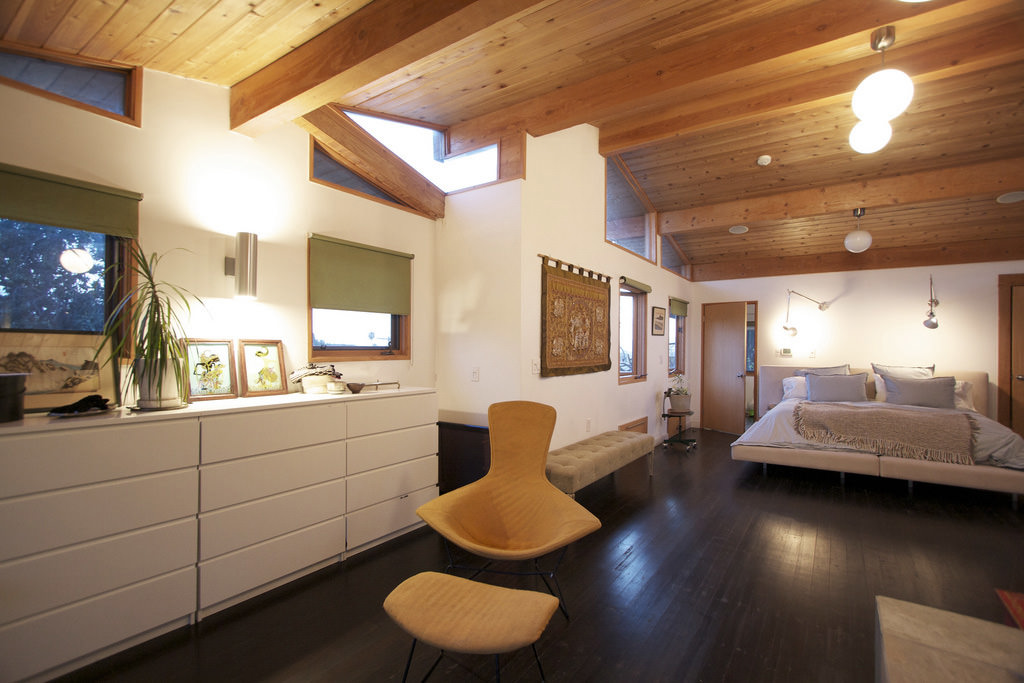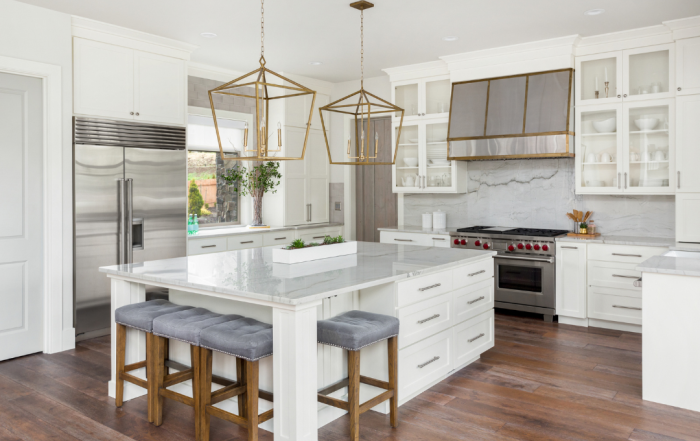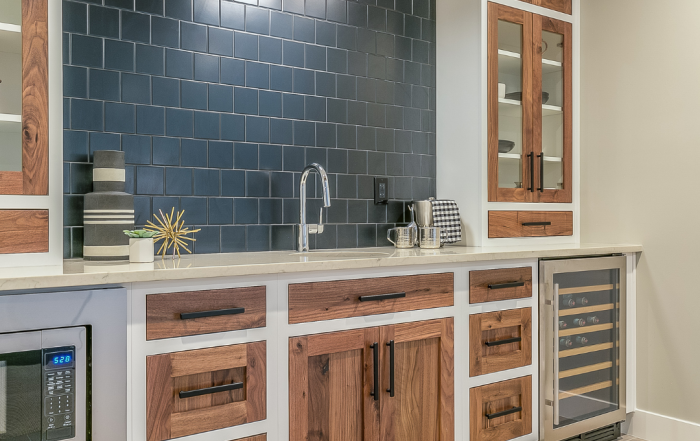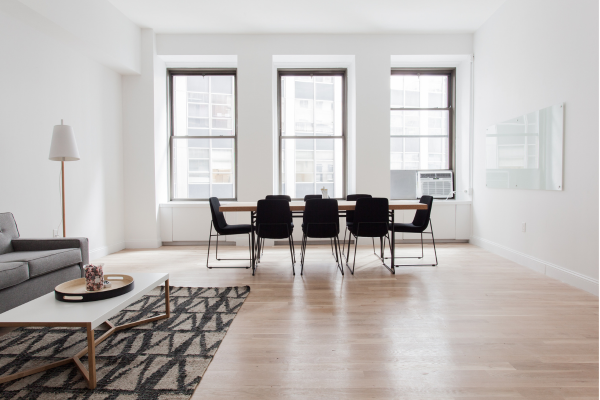Choosing countertops is one of the most important considerations for kitchen remodels. You want a countertop that best fits the style of your new kitchen but also gives you functionality and durability.
Although you may love the look of white granite, it won’t be a practical choice if you have kids because you’ll be forever wiping it down.
With that said there are lots of options for kitchen countertops that aren’t as expensive as granite but still look good and are easily maintained.
Types of countertop materials
After you’ve assessed how you might use the countertop on a daily basis, you need to think about the best kitchen countertops for your needs. Remember to factor in budget, durability and maintenance when choosing countertops.
Here are some common types of countertop materials to consider:
Natural Stone
Natural stone, such as granite, quartz, marble, limestone and soapstone, is a popular choice for kitchen countertops because of its sleek, elegant look. As well as looking luxurious, natural stone comes in a variety of shades and can handle heat and, after sealing, is scratch resistant. This can be an expensive countertop option if the stone is imported.
Concrete
Although concrete countertops are similarly priced to natural stone, they offer the ability for customization. Pigments and aggregates (such as sand or limestone) can be added to create a certain color or texture. Different finishes can be achieved depending on what look you’re after. Concrete kitchen countertops can be more maintenance, you have to be careful of water discoloration and acidic spills. Periodic sealing and waxing can help protect them.
Solid Surfaces
Solid surface countertops are man-made from mineral dust and plastic resins. The resulting material, Corian, has lot of appeal as it can mimic stone and looks seamless. Solid surface countertops come in a variety of colors and shapes, so are a good choice for a contemporary home. They’re not heat or scratch resistant though, which could be a deciding factor.
Wood
Wood countertops, like butchers block, have a timeless appeal and give a kitchen warmth and character. Cleaning is easy and scratches can be sanded out. Regular sealing with mineral oil or beeswax is required to prevent water damages. Wood will cost you about the same as a granite countertop.
Laminate
Laminate is the most affordable material when choosing countertops. It’s versatile in terms of custom colors and designs, and can even look like marble or granite. The best thing about laminate is that it’s very low maintenance and requires very little effort to keep clean. Avoid placing a hot pan directly on the surface as it may scorch the laminate.
Stainless steel
The most user-friendly material for a countertop is stainless steel. Chefs love this durable surface for its heat and stain resistant abilities. Unlike stone or concrete, its non-porous so you don’t have to use special cleaners or worry about acid spills. Stainless steel comes in different grades to suit different budgets.
Recycled glass
Colorful and creative, recycled glass countertops can be a good choice if you’re environmentally minded, and who isn’t these days? Post-consumer recycled glass is held together with a binding agent, either cement or resin. You can also get solid glass kitchen countertops made out of recycled glass pieces that have been crushed and melted. Recycled glass countertops are typically non-porous, heat-resistant and stain-resistant.
Choose your edge
The type of countertop material you go with can also determine the edges. Square edges are standard but you can also get a customized decorative edge depending on the type of material you choose. From bullnose and bevel, to cove and ogee, there are numerous choices when it comes to countertop edges. Consider some kind of rounded edge for natural stone countertops to avoid chipping.
Mix and match your material
Mixing and matching materials can give you the look you want for your kitchen remodel without the price tag. If you love a particular material but can’t afford a whole countertop then consider using it on a kitchen island. You could also insert it into another material for a specific use, such as a chopping block or baking area.
If you have leftover stone from bathroom counters, this can also be repurposed for the kitchen countertops. Not only will you save money with this practice, it’s less wasteful for the planet.
Author’s Bio:
Angela Pearse is a blogger for Zumper who frequently combines travel with freelance writing. She’s passionate about Art Deco hotels, historical novels, Netflix, hiking and healthy living.






